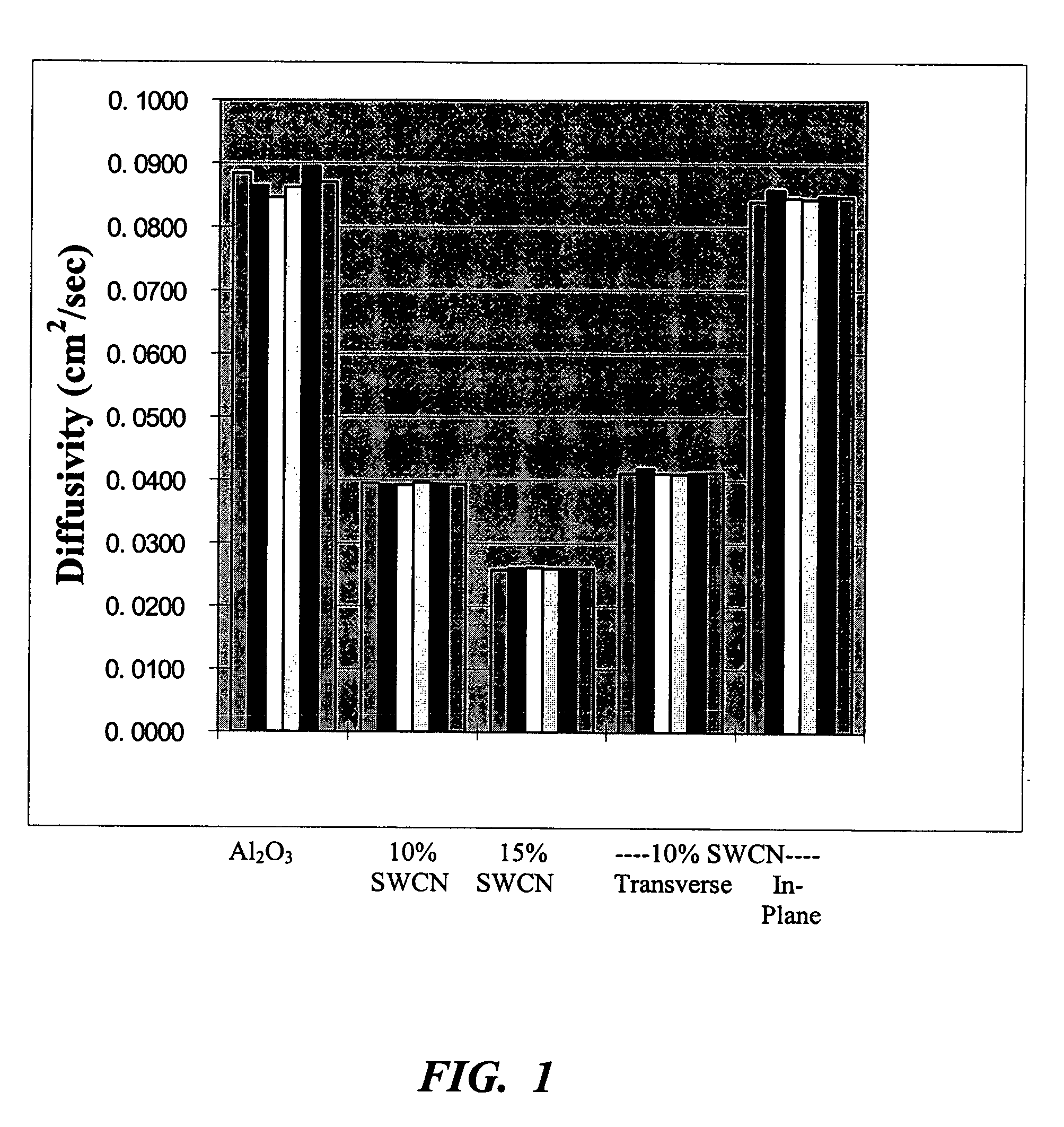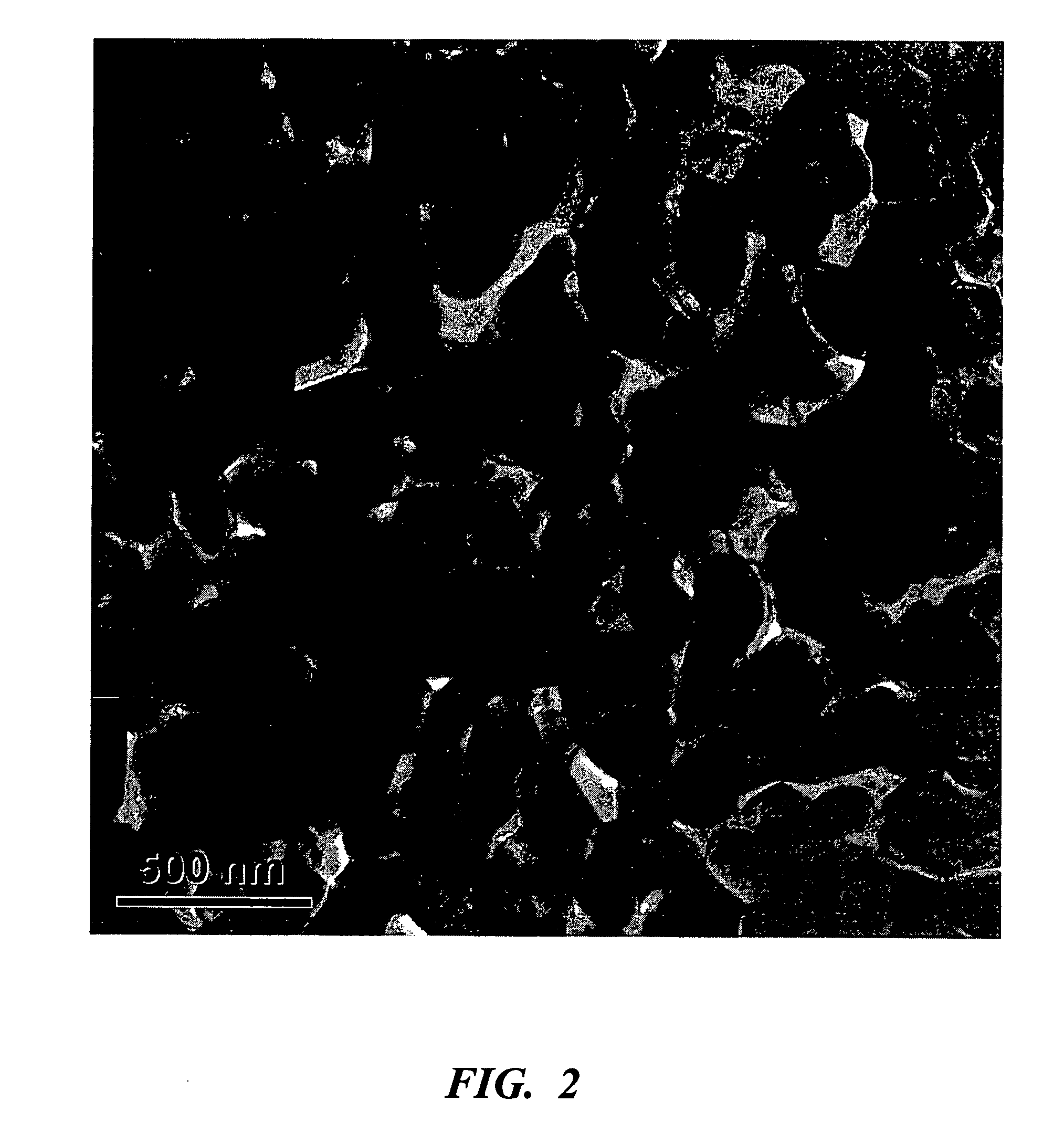Anisotropic thermal and electrical applications of composites of ceramics and carbon nanotubes
- Summary
- Abstract
- Description
- Claims
- Application Information
AI Technical Summary
Benefits of technology
Problems solved by technology
Method used
Image
Examples
example 1
[0031]Alumina powder, consisting of 80% α-Al2O3 and 20% γ-Al2O3 with particle sizes of 300 nm (40 nm crystallite size) and 20 nm, respectively, was obtained from Baikowski International Corporation (Charlotte, N.C., USA). Gas condensation synthesized γ-Al2O3 with average particle sizes of 15 nm and 32 nm was obtained from Nanotechnologies Inc. (Austin, Tex., USA) and Nanophase Technologies Corporation (Darien, Ill., USA), respectively. Purified single-wall carbon nanotubes (SWCN) in paper form, produced by the HiPco process with more than 90% of the catalyst particles removed were obtained from Carbon Nanotechnologies (Houston, Tex., USA). The SWCN were dispersed in ethanol with the assistance of ultrasound. The alumina was then mixed with the SWCN dispersion, and the combined dispersion was sieved using a 200-mesh sieve, then ball-milled for 24 hours (still in ethanol) using zirconia milling media, and then dried to form a dry powder mixture. An alumina-SWCN mixture at 10% SWCN, by...
example 2
Materials, Equipment, and Experimental Procedures
[0041]Nanocrystalline 3Y-TZP (3 mol % yttria-stabilized tetragonal zirconia polycrystals) with an average particle size of 28 nm were obtained from Nanophase Technologies Corporation (Darien, Ill., USA). Purified single-wall carbon nanotubes, produced by the HiPco process with more than 90% of the catalyst particles removed, were obtained from Carbon Nanotechnologies (Houston, Tex., USA). The carbon nanotubes were dispersed in ethanol and the assistance of ultrasound. The 3Y-TZP nanopowder was then added to the nanotube dispersion, and the combined dispersion was sieved with a 200-mesh sieve, then ball-milled for 24 hours (in ethanol) using zirconia milling media, then dried to form a dry powder mixture. The proportions used were such that the final mixture consisted of 10% single-wall carbon nanotubes by volume and the remainder 3Y-TZP. For comparison, a sample of the same nanocrystalline 3Y-TZP was used without the carbon nanotubes....
PUM
| Property | Measurement | Unit |
|---|---|---|
| Temperature | aaaaa | aaaaa |
| Temperature | aaaaa | aaaaa |
| Temperature | aaaaa | aaaaa |
Abstract
Description
Claims
Application Information
 Login to View More
Login to View More - Generate Ideas
- Intellectual Property
- Life Sciences
- Materials
- Tech Scout
- Unparalleled Data Quality
- Higher Quality Content
- 60% Fewer Hallucinations
Browse by: Latest US Patents, China's latest patents, Technical Efficacy Thesaurus, Application Domain, Technology Topic, Popular Technical Reports.
© 2025 PatSnap. All rights reserved.Legal|Privacy policy|Modern Slavery Act Transparency Statement|Sitemap|About US| Contact US: help@patsnap.com



